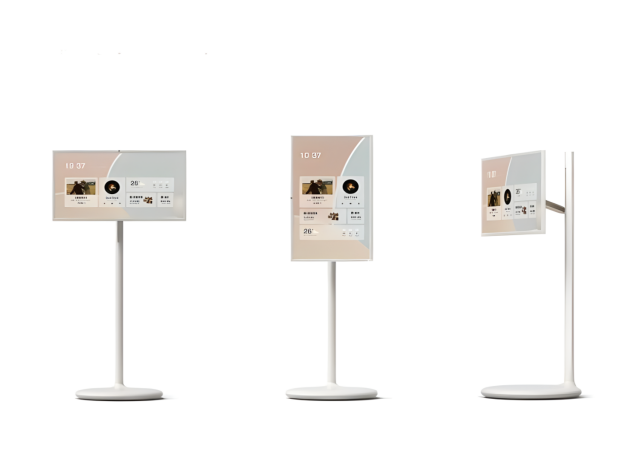A digital kioskis an automated self-service apparatus outfitted with a digital display and interactive functionalities for the dissemination of information, advertising, and other multimedia content. Users can interact with the terminal via a touchscreen or other input means to obtain the requisite service or information. These terminals are prevalently utilized in a diverse range of scenarios such as retail, public areas, transportation hubs, medical institutions, and tourist attractions, and are devised to enhance the user experience, augment efficiency, and offer convenient self-service.

Industry Use:
1. Retail: Furnishes product information, promotions, and self-checkout services.
2. Public Services: Exhibits government information, announcements, and self-service options.
3. Transportation: Provides ticketing services, real-time information, and navigation instructions.
4. Healthcare: Facilitates patients to make appointments, check in, and inquire medical information.
5. Tourism: Supplies scenic spot information, electronic tours, and ticket purchase services.
6. Entertainment: Displays event information, ticket sales, and interactive content.
7. Advertising: Serves as an advertising platform, showcasing dynamic advertising and brand information.
1. Versatility: Supports a multiplicity of applications and services to satisfy the demands of different scenarios.
2. High efficiency: Offers fast and convenient self-service to curtail waiting time.
3. User-friendly: Provides an intuitive interface to streamline user operation and enhance the experience.
4. Interactive: Interacts with users through touchscreens or other input devices to heighten the sense of participation.
5. Information immediacy: Updates and displays information in real-time to ensure the accuracy and timeliness of the content.
6. Cost savings: Reduces operating costs by minimizing the need for manual services.
1. Digital display
- For presenting information, advertising, and multimedia content. It is typically a high-resolution LCD or LED screen to guarantee the clarity of images and videos.
2. Touch screen
- Allows users to interact by touching the screen. Common touchscreen technologies encompass capacitive and infrared.
3. Processor
- Provides computing capacity to support terminal operation and application running.
4. Network connection module
- Supports wired and wireless network connections to ensure real-time communication and data transmission between the device and the background system.
5. Printer
- For printing receipts, bills, and other documents.
6. Barcode Scanner
- Utilized to scan barcodes for product information or for authentication.
7. Card reader
- Supports the reading of magnetic stripe cards and chip cards for payment processing and authentication.
8. Camera
- For security surveillance and user identification.
9. Audio output device
- Provides voice prompts and multi-language support to improve the user experience.
10. Robust housing
- Protects internal components from damage and unauthorized access, usually with a level of protection to adapt to various environments.
1. Operating system
- Common operating systems include Windows, Linux, or Android, providing a stable operating environment and a variety of development interfaces.
2. Application software
- Specifically developed self-service terminal application software, responsible for interface display, user interaction, and data processing. With a modular design, it is easy for function expansion and update.
3. Background management system
- Responsible for equipment monitoring, data collection and analysis, content management, and system maintenance. Provides remote monitoring and management functions to ensure the normal operation and timely maintenance of devices.
4. Database system
- Stores user data, transaction records, and log information. Common database systems include MySQL and PostgreSQL.
5. Network communication module
- Utilizes the TCP/IP protocol to exchange data with background servers over wired or wireless networks. It supports secure connection modes such as VPN to ensure the security of data transmission.
6. Security module
- Comprising firewalls, encryption modules, authentication systems, etc., to ensure the security of data and user information.
7. Interface module
Provides interfaces with payment gateways, information systems, and management platforms to ensure seamless integration and data sharing with external systems.